#Double Dubuque FIlms
Text
To All the EVIL Devil Horns Out There "Death to Metal" reviewed! (Wild Eye Releasing / Blu-ray)
To All the EVIL Devil Horns Out There “Death to Metal” reviewed! (Wild Eye Releasing / Blu-ray)
“Death To Metal” available on a Collector’s Edition Bluray!
Already with the traumatic distaste for heavy metal music, the fire and brimstone preacher, Father Milton Kilborne, addresses his congregation with a bigotry homily aimed to categorize not only heavy metal music as a sin, but also homosexuality, internet porn, and other indulging vices. When Father Kilborne is suspended by the church’s…
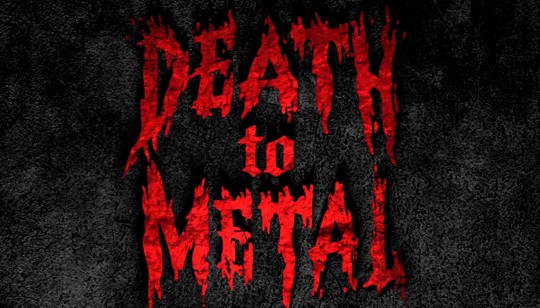
View On WordPress
#Alex Stein#Andrew Jessop#Black Web#blu-ray#Boar#Brad Vondra#Charlie Lind#Dan Flannery#Dean Wellman#Death to metal#Deathgasm#Double Dubuque FIlms#DreamCather Productions#Driftless Sisters#Dubuqe Iowa#Exmortus#Gary Greco#Good Friday#Grace Melon#Hard Rock Zombies#horror#Indigogo#Inquiring Blood#Jackson Cooper Gango#Joe Schmerrman#Knights of Templar#Lara Lind#Lords of Chaos#Metalsploitation#Monolithe
0 notes
Text
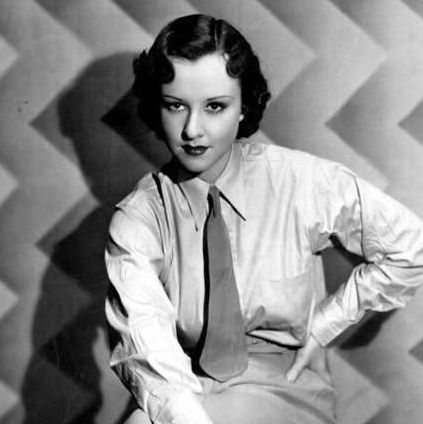
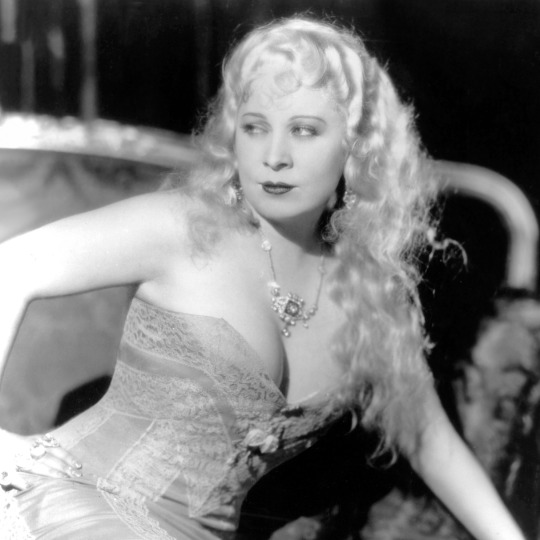
Propaganda
Margaret Lindsay (Frisco Kid, The House of the Seven Gables, Scarlet Street)—she was born in Dubuque, Iowa, then moved to England to make her stage debut. She framed herself as a British actress and moved back to America to try Hollywood, then starred with James Cagney in a bunch of movies. She was in the Ellery Queen movie series and The House of the Seven Gables. She never married (I suspect lesbian stuff) but lived with her sisters. She dated Cesar Romero and Liberace (I told you. Lesbian stuff.) Please include the pic of her in the tie [included above]
Mae West (She Done Him Wrong, I'm No Angel)—She is an absolute icon, the OG sex symbol. Every word from her mouth was an innuendo and she was proud of it. I guess one could say she slayed. She got Cary Grant his first acting role, as well. How could you NOT vote for someone who says such iconic stuff as "I do all my writing in bed; everybody knows I do my best work there" or "You only live once, but if you do it right, once is enough." SHE COINED THE PHRASE "IS THAT A GUN IN YOUR POCKET OR ARE YOU JUST HAPPY TO SEE ME?" I LOVE HER!!!
This is round 2 of the tournament. All other polls in this bracket can be found here. Please reblog with further support of your beloved hot sexy vintage woman.
[additional propaganda submitted under the cut.]
Margaret Lindsay:

Mae West:

Her voice! Her body! She was thick as hell and SO confident.
Mae West is often called the queen of the sexual pun or innuendo, she was an early sex symbol and a comedy icon. She also has a quote saying "When I am good, I am very good. But when I am bad I am better!" which is possibly the peak of hot girl energy ever. (Including the clip here)

for an era that didn't have much wiggle room when it came to women that studios wanted in their films, it's refreshing that she was in her late 30s when she skyrocketed to movie fame. she was also curvy and witty and raunchy, an absolute icon!
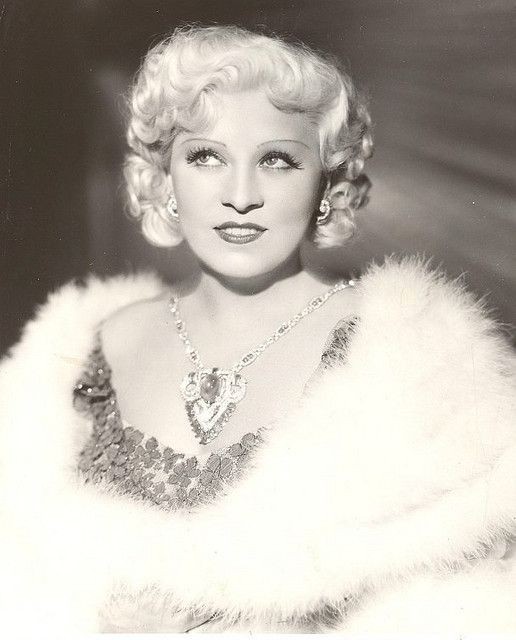
Legendary sex symbol. Like 500 vintage iconic quotes and double entendres. "Is that a gun in your pocket, or are you just happy to see me? " "When I'm good, I'm very good. But when I'm bad, I'm better" / "It's not the men in your life that count, it's the life in your men" / "I feel like a million tonight. But one at a time." , "Marriage is a fine institution, but I'm not ready for an institution. " / " How tall are you without your horse? Six foot, seven inches. Never mind the six feet. Let's talk about the seven inches! " Look the pictures don't do her justice just watch a compilation and tell me that voice doesn't do it for you
youtube
She was a SEX GODDESS at a time when that was an extremely scandalous thing to be, and she worked it! She was sardonic, sarcastic, funny...and stacked! Favorite quote (from Night After Night, 1933): Random woman: Goodness! What beautiful diamonds! Mae West: Goodness had nothin' to do with it, dearie.
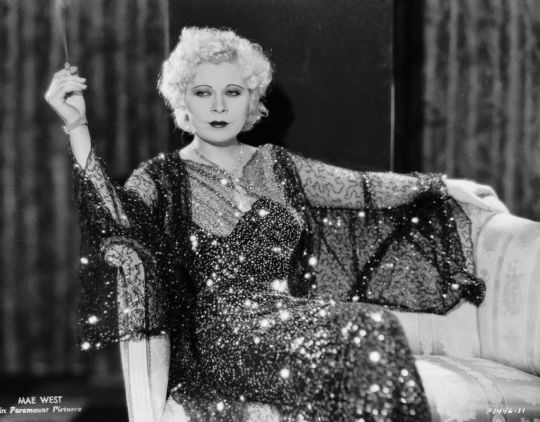
i personally love this silly production number from one of her lesser known movies
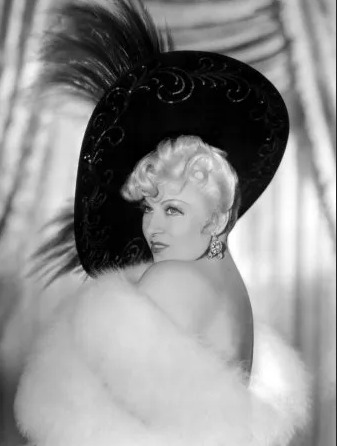
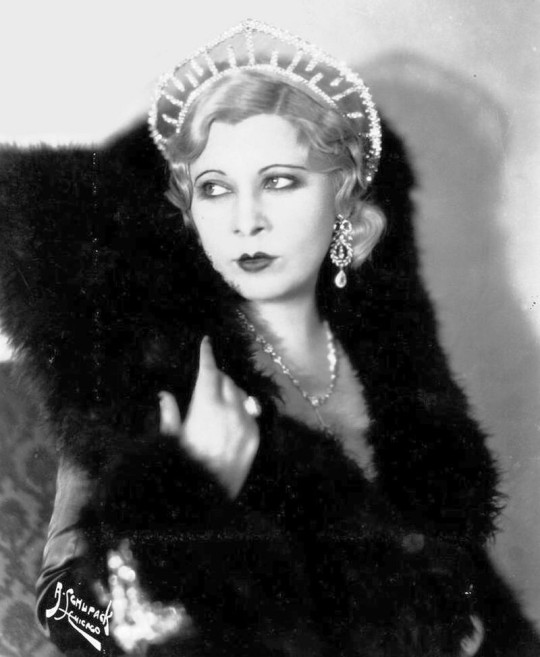
She was arrested for indecency and chose to serve 10 days in prison instead of paying the fine for the publicity, and she claimed that she refused to wear the ugly prison outfits so she wore her silk lingerie the entire time. Also one of the first historybound vintage fashion icons (although vintage for her was the Victorian era)

490 notes
·
View notes
Text
Devil In The Details - Season 3 of Ozark
by Valentina Valentini / Photos by Steve Dietl / Framegrabs Courtesy of Netflix
International Cinematographer's Guild Magazine - October 4, 2022

Season 3 of Netflix’s rural family drug saga, Ozark, hits new visual highs (and dark narrative lows).
When Marty Byrde (Jason Bateman) walks into an office full of large glass windows, he’s the guy who will note the windows are south-facing, and the cooling bill will be about fifteen percent higher in summer. That same attention to detail is also what drives the behind-the-scenes team of Netflix’s Emmy-winning crime drama, Ozark, now streaming its third (and many would say its most visually ambitious) season. The series was created by Bill Dubuque and Mark Williams, executive produced by showrunner/writer Chris Mundy, with star Bateman also serving as an executive producer and director for nearly one-third of all shows produced so far. Season 1’s final episode earned Bateman his first directing Emmy nomination, along with a nomination for Local 600 Director of Photography Ben Kutchins, who has shot roughly half of all three seasons. Bateman went on to win an Emmy for the opening episode of Season 2, which Kutchins also shot. Guild Director of Photography Armando Salas came aboard in Season 2 to split the schedule with Kutchins. For this most current season, Kutchins shot Episodes 1, 2, and 6 while Salas shot 3, 4, and 7 through 10. (Manuel Billeter shot Episode 5.)
“There are so many things that have to go right for anything to be good,” observes Executive Producer/Writer Chris Mundy. “So, the attention paid to detail is everything. And that’s the beauty of being able to have two DP’s – one is always shooting, and one is always prepping. That’s a godsend for the director in prep, to have their DP fully [there with them] the whole time so they know exactly what the other one is thinking. I think it’s helped the show, and both of [our] guys are so good [at it].”
From inception (Pepe Avila del Pino shot the pilot and Episode 2 of Season 1), Ozark has been a narratively (and visually) dark series. That means even the ostensibly “fun” moments – teenagers hanging out at a lake on a sunny summer day; wine and terrycloth bathrobes at a cozy bed and breakfast; winning the jackpot at a casino – are laced with violence and fear. “You know those joyful scenes in a thriller or horror movie, right before the hammer comes down, that trick the audience?” Kutchins posits. “Well, Ozark is a completely different meditation. It’s always bleak for our characters. We don’t allow them those joyful moments; it just goes from bad to worse.”
Though the tone in Season 3 is consistent with what came before, the creative team believed a slightly softer feel was appropriate for the story’s evolution. That was also a practical decision, since the darkness of the show wasn’t translating to all viewing platforms. “You can’t assume or depend on pristine viewing conditions when you’re [filming a show] for a streaming service,” Bateman offers. “People are watching at home, sometimes during the day, and there’s ambient light. We always try to play on the edge of just the right amount of exposure and contrast.”

Kutchins (who came on right after the pilot) and Bateman wanted to create a world that was harsh and uninhabitable, despite its idyllic location on Lake Ozark – doubled by Georgia’s Lakes Lanier and Allatoona. The goal has always been to show darkness as a feeling of imminent threat; to do that photographically, Kutchins used the negative and positive parts of the image to create enough shadow to allow the audience’s minds to wander into what’s coming next without knowing what exactly that is – only that it’s bad.
“I light the characters just enough to read their expressions,” Kutchins describes, “with enough light on the walls behind to create some separation. Ozark has been very much about controlling the amount of information we reveal in any given image.”
While that approach was repeated in Season 3, Kutchins and Salas knew they had to evolve the look with the Byrdes’ progression. They’re doing business at the state-government level; there are new characters, like a sly forensic FBI agent, Wendy’s bipolar brother, and a spoiled son of a Mafia boss, and they’ve opened a bustling new casino, The Missouri Belle, a massive addition to the few sets the show used at Eagle Rock Studios Atlanta. (Most of the show has been shot on location in Georgia, doubling for the Ozarks.)

Bomba, whose previous credits include the Sundance indie hit Mudbound(shot by Oscar nominee Rachel Morrison, ASC) and the Oscar-winning feature Walk the Line (shot by Phedon Papamichael, ASC), markedly expanded the show’s color palette. The designer took research trips to Rising Star Casino and Resort near Lawrenceburg, IN, and the Lady Luck Casino in Caruthersville, MO, before landing on a New Orleans riverboat theme with red and gold interiors. Having grown up in NOLA, Bomba expanded on what was familiar, modeling Marty’s office, the casino entrance, and The Marquette bar (the land-based parts of the casino) on older structures in the now-gentrified Warehouse District and the Napoleon House in the French Quarter.
He describes the Missouri Belle riverboat casino as fashioned after the paddle steamers that traveled up and down the Mississippi River in the 19th century. “Think Mark Twain, Victorian embellishments, opulent grandeur, elegant detailing, and warm light sourced by what would have been gas or oil-flamed fixtures,” Bomba reveals. “Jason suggested an overall red and gold scheme to contrast any other set piece that had been established in the series, so I ran with it. I was thrilled to expand the palette of the show.”
Salas says Bateman has always been intimately involved in the evolution of the show’s look. “The casino was going to have a very different feel from the majority of what we’d done before,” he adds. “ [We wanted] the casino floor [to feel] engulfing and sophisticated, like you could really be sucked into gambling all your money away. It needed to be a relief from the oppressive and cool [blue] world that we so often see.”
Kutchins and Salas wanted a wealth of practical lighting units in the casino set, and Bomba obliged, with a central gaming pit area and its ceiling coffers comprised of exposed carnival-like bulbs. Bomba also wanted antique brass chandeliers, sconces, and pendant fixtures – created by decorator Kim Leoleis and her team – both in the casino and the bar and entrance areas. Both Kutchins and Salas wanted more light, specifically additional softer, indirect sources as well as accent lights for the gaming tables in the central pit area. In the end, ninety percent of the casino was lit by practicals incorporated into the design.

Season 3’s new tribulations for the Byrde family required Kutchins and Salas to dive ever deeper into the narrative rabbit hole, with full-frame capture and a shallow depth of field proving the best visual track. “Shooting full-frame brings the characters forward in the image,” describes Kutchins, who (at the suggestion of A-camera/Steadicam operator Ben Semanoff, SOC) switched, in Season 3, from the 4K Panasonic VariCam to the 5.7K Sony VENICE. “It’s almost equal to old VistaVision film, where you have these wide landscape shots, yet there is character in it, too,” Kutchins notes. “It manages to be both, simultaneously, and the characters come right into living rooms.”
The Sony VENICE offered Ozark’s directors of photography a much larger capture sensor, but in a small, lightweight body. Semanoff, who also has directed two episodes of Ozark, says he had used VENICE as A-camera/Steadicam operator on the Peter Berg feature Spencer Confidential (shot by Tobias Schliessler, ASC) and loved the form factor along with the Rialto attachment, which allows users to pull off the front block of the camera, essentially making it just a small housing for the sensor that is tethered via a fiber umbilical cable back to the main body to record the data.
“[Guild Director of Photography] Igor Martinovic and I pushed to use VENICE on [the HBO limited series The Outsider] with [actor/director] Jason Bateman,” Semanoff recounts. “I was a huge fan, as it has a great form factor for Steadicam and would facilitate the different locations we were looking at for Season 3 [of Ozark] – on the water, in the woods – some very remote areas. Although the ARRI LF was high on everyone’s list for image quality and color rendition [the ARRI LF Mini was not yet available], the VENICE met a wider range of our concerns.” First AC Liam Sinnott adds that the Rialto accessory “made it possible to put the camera in a multitude of positions you would not be able to achieve with a regular-sized body, even one as small as a RED or ALEXA Mini.”

“Ben and Armando are constantly trying to push the look of the show,” Sinnott adds, “be it through shot design, exposure, or depth of field. A lot of the conversations concerning the use of the Noctilux revolved around isolating the characters. They wanted scenes with a single actor in wide shots to separate from the foreground and background and be the only element in focus within the frame. With scenes involving multiple characters, they wanted the ability to detach story beats and use the focus as a storytelling tool.” Kutchins adds that “as the Byrdes further isolate themselves from each other, we wanted to use this lack of depth of field to isolate them visually from one another.”
Salas cites an example from the opening moments of Episode 4 when Marty, having been kidnapped by the drug lord Navarro (Felix Solis) to Mexico, awakens in a dark cell. Shot in a series of three set-ups, “the camera is very close to [Bateman], experiencing the same disorientation that Marty is feeling,” Salas explains. “The background is all abstract shapes and textures, and as Marty gets his bearings, so does the viewer.”

The VENICE and Leica lens package dynamically alter Ozark’s visual landscape in Season 3. But those weren’t even, perhaps, the biggest changes to the look of the series. Before Season 2, Netflix changed its release delivery to require Dolby Vision, with new home displays now mostly being HDR-equipped, and even tablets and other smaller display devices becoming HDR compliant. That meant the show had to be versioned (mastered) in HDR, with many legacy [SDR] viewers seeing the end product in HDR generated by a computational analysis within the Dolby Vision process.
Salas had gone on to shoot another Netflix show, Raising Dion, and immediately implemented an HDR workflow to view both HDR and SDR simultaneously on set. When it came time to prep Season 3 of Ozark, Salas tweaked his Raising Dion workflow for Ozark. He and Kutchins flew to Atlanta for a camera and workflow test, and, based on that, Stipan created their HDR LUT for on-set viewing.
“I made a global trim that matched the HDR as close as I could get,” Stipan recounts, “and then I went through the SDR episode to make sure it looked as good as it could be, and nothing bumped me in terms of highlights and shadows.”
Kutchins and Salas were then able to check both SDR and HDR versions whenever they were dealing with high-contrast situations, i.e., windows, backings, and practicals on set. Their digital imaging cart consisted of two Canon V2411 HDR monitors fed by an AJA FS-HDR rack, which held the show LUT’s and simultaneously fed an SDR version downstream to Video Village, which approximated the Dolby Vision down-convert.

Semanoff, who describes Ozark as the “highlight” of his career, says he has been “spoiled for life” by Jason Bateman’s trust and partnership. “Over the several productions Jason has brought me onto, he’s always treated me like a collaborator,” Semanoff says. “On Ozark, in particular, he has encouraged me to help set and maintain an aesthetic for the way the camera moves, or doesn’t move. Beyond which he entrusted me with directing two episodes, which is a special experience. Besides the amazing cast and crew, [Bateman] and [Chris] Mundy encourage directors to approach their episode[s] with a freedom more indicative of a feature film. It’s liberating!”
For his part, Kutchins says he’s “so pleased” the dark drama has found such a huge audience. “My Ozark experience simply wouldn’t be the same without the amazing team of people who came together to make the show,” Kutchins concludes. “Everyone is operating at such a high level that we all feel inspired to do our best work. [Viewers| would never know it from [Ozark’s] serious tone, but this show is fun to shoot! Behind every intense scene is a crew that is having the time of their lives.”

Ozark (Season Three)
Directors of Photography: Ben Kutchins, Armando Salas
A-Camera Operator: Ben Semanoff, SOC
A-Camera 1st AC: Liam Sinnott
A-Camera 2nd AC: Kate Roberson
B-Camera Operators: Greg Faysash, SOC, Christopher Glasgow, SOC
B-Camera 1st AC: Cristian Trova
B-Camera 2nd AC: Johnny “Utah” Hoffler
Digital Loader: Taylor Seaman
Digital Utility: Walker Markey
Still Photographers: Steve Dietl, Guy D’Alema, Jessica Miglio, SMPSP, Tina Rowden
0 notes
Text
Blog entry: Food!
Blog Entry: Food
The first thing I decided to do for this blog entry was watch Food Inc. I had seen some other documentaries that followed the meat and/or food industry in general, but I had not seen this one so I did enjoy seeing a different documentary. I was intrigued watching this video because although I do still eat meat, I am aware of how the food that I eat is processed and modified, and I try to have one to two nights a week where I don’t eat meat with my meal, that way I am not supporting the meat industry every day of the week. I know that some other people take their actions further than mine and are vegetarians and vegans, and I think that is awesome, for all of my roommates are vegan and/or vegetarian so I have no problem eating some of their foods that they make, and they have no problem with me still eating meat. I think my first “wow” moment from the video was in the beginning when they first talked about the chicken industry. I felt as if I could relate to this industry the most because I work at a major fast food corporation that focuses on selling mainly chicken, Chick-fil-A. I have worked for this company for a total of 5 years now, and we definitely play a huge role in the chicken industry, for I can only imagine how much chicken my store alone sells, and I would probably be really surprised to hear all of the chicken sold throughout the whole corporation as well. From the video, I thought it was intriguing how when they were filming the interview with the Tyson chicken farmer, Vince Edwards, he at first was going to allow Food Inc. to film the inside of his chicken house, but then after talking to Tyson (the company), he decided not to let the crew film the inside of his chicken house. At this point, the thing that stuck out to me the most was that the creators of Food Inc. had reached out to dozens of farmers asking them to film the inside of their chicken house, and only one farmer agreed too. The Purdue farmer, Carole Morison, mentions in her interview how in chicken farming today, the chickens are heavily modified and are grown much faster and bigger than they should be, for the this is how the companies today want their chicken to be grown. In the chicken house, there are graphic videos of Carole walking in the house and describing how dirty, smelly, and dusty it is. Watching this part of the video was really the “wow” moment for me because working at Chick-fil-A, I consume chicken every time that I work, so I just kind of had a “this is how my food is made” moment. I essentially had a personal connection during this point of the film, so I definitely felt my “wow” factor. I was okay to watch it, but I really did come to the realization that an industry like that is so graphic and is not nice at all, for it was only slightly disturbing. I also found a personal connection during this film because it discussed many meat and food industries that are popular and well-known, so the filmmakers really wanted people to know how food they could eat on a day to day basis is processed. I feel like watching this film has really opened my eyes for me to see how all of the food that I eat is processed, in good and bad ways.
I was kind of excited to read this chapter because the food industry is something that really interested me when I got to learn about it in some of my previous classes, and some of the information I had already been introduced to. I also knew that I was going to be learning new things about the food industry as well. One quote that stuck out to me was on page 224, “Since the green revolution, food production in developing countries has increased, doubling or tripling in many places. However, because population has also nearly doubled, the amount of food produced per person has remained nearly unchanged in most parts of the world. At the same time, the green revolution has resulted in damage to soils, waters, and ecosystems, the final costs of which are not known.” One thing I did learn from this quote was the green revolution, which was the introduction of fertilizers and pesticides in agriculture, which I knew had to have been introduced at one point, I just didn’t know the year, which was the 1960s and 70. After learning this information about the green revolution, I liked how this quote stated what has happened in the world since then, with some things being positive, and some things being negative as well. I found it interesting that the quote started out positive stating how the green revolution caused food production to rapidly grow in developing countries, but what about the under developed countries? Some underdeveloped countries don’t have the ability to produce food for everyone in their population, and although it is unfortunate, it is almost like a sad truth I thought about while reading this quote. I also found it interesting how the quote ended discussing the bad things that have come out of the green revolution, like major damage to soils, waters, and ecosystems due to pollution. Pollution of many natural resources continues to be an issue in the world today, for if we continue to pollute our waters, air, and ecosystems, we will essentially not be able to survive on the planet anymore. Actions need to be taken now that way we can get ahead of polluting our Earth until it can no longer exist anymore. At the end of this quote, I was able to reflect on the amount of pollution that produced on Earth every single day, so I thought it was a good idea that the author had ended the paragraph that way. As I kept reading, I did find some of the other topics discussed to be interesting, but I did not find another intriguing quote until the last page, 237, “ Food sustains people and communities. Agriculture, the practice of growing food, touches all of us; every person on Earth has a connection to food. Involving learners in growing their own food fosters understanding of the larger, living world and their connection to it. For educators or sustainability professionals looking for ways to reach out to the general public, food can be a positive and engaging vehicle for building socially and economically healthy communities. Community gardens, urban farming, and edible landscapes are part of the transition to community resilience.” After reading this quote, it made me think of how the food industry essentially effects the entire world, no matter where you are or who you are. Without food, human life simply would not be able to exist. I liked how the author decided to end on a note like this, stating how important food is for everyone in the world, not just a few people. This is an industry that is global, and we need to be careful with how we treat it because we could very easily ruin it if we don’t take the right precautions. I liked how the end of the paragraph has ideas for things you could do to support the food industry in a good way, instead of producing too much food waste, which is very easy to do in our country. Growing your own food is also a very good option that was mentioned, or utilizing a community garden if you are not interested in gardening on your own. I overall liked the note that the author left this chapter on, so I thought it would be good to include a quote like this in my blog for this week.
Kenner, R (2008). Food Inc. [Video file]. Retrieved from
https://fgcu.catalog.fcla.edu/gc.jsp?To=1
Thomas , B., Brent Jackson, S., Salmond , J., & Nunes-Zaller, A. J. (2018). A Sustainable Future: Equality, Ecology, and Economy . Dubuque , LA : Kendall Hunt Publishing Company.
2 notes
·
View notes
Text
DC : un film Nightwing par le réalisateur de Lego Batman
Warner Bros. et DC seraient en train de négocier avec le réalisateur Chris McKay pour produire un film live-action dédié à Nightwing.
Double dose d’actualités cinématographiques DC en ce vendredi. En plus d’avoir officialisé Matt Reeves à la réalisation du film The Batman, Warner Bros. serait en train de plancher sur un autre long-métrage dédié cette fois à Nightwing/Dick Grayson. D’après The Hollywood Reporter un réalisateur serait déjà en négociations pour s’en charger : Chris McKay, à qui l’on doit récemment le film animé Lego Batman. Le nom de Bill Dubuque (The Accountant) est également avancé pour l’écriture du script.
Lire la suite de l‘article sur Begeek.fr
A découvrir également sur Begeek.fr
Nioh : le million en deux semaines
Six : History commande une saison 2
C’est bel et bien Matt Reeves qui réalisera The Batman
Prey : le pouvoir de mimétisme en vidéo
Promo de la semaine : support magnétique voiture pour smartphone
#_author:Antoine Roche#_draft:true#_revsp:begeek.fr#_lmsid:a0Vd000000AEHtqEAH#_uuid:360592ba-63cd-3ab6-a1f6-89a5659d015a
2 notes
·
View notes